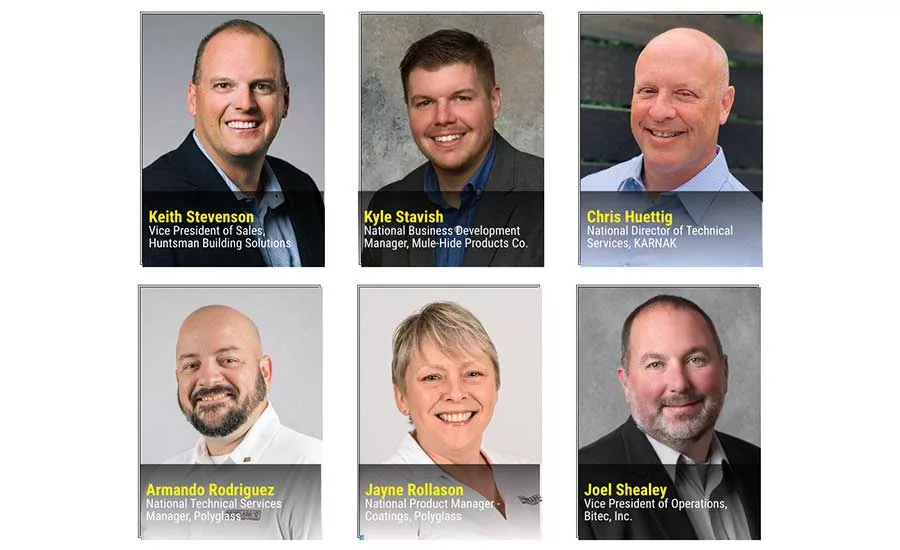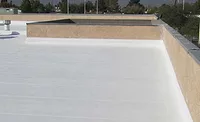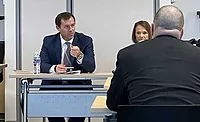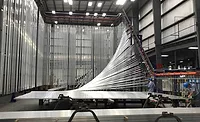Coatings Special Section
Q&A: Counting on Coatings
The roof coatings market continues to expand, offering roofing contractors solutions that bring cost savings and sustainability to customers.

The supply chain issues that plagued the roofing industry following the COVID-19 pandemic have begun to ease. Record inflation has also waned, yet remains persistent, as does a sense of general economic uncertainty. While talk of a “soft landing” that the Federal Reserve has been intimating seems attainable, the jury is still out on whether that comes to pass or the economy eventually slips into recession.
While the ambiguity may not be good news for roofers — with clients taking a "wait-and-see" approach to capital projects — there is an opportunity for contractors looking to expand their use of roof coatings or even delve into the marketplace for the first time.
RC asked several leaders in the roof coatings space about the state of the coatings market, the opportunities for roofing contractors, and what their companies are planning for the future. Here’s what they had to say.
RC: How would you describe the state of the roof coatings market today?
Keith Stevenson (KS): The roof coatings market is limitless. Not only are roof coatings an ideal solution for new construction, but they also optimize roof retrofits. Thus, the demand for roof coatings persists, even as the construction market fluctuates. This sector has a lot of opportunities for the contractors currently active in it and those considering entering the space.
Chris Huettig (CH): The roof coatings market is strong and continues to ride the growth spurred by the pandemic when new roof components were experiencing long back orders and coating raw materials were readily available.
Roofing contractors needed to continue caring for their customers, so they looked to maintenance, repair, and restoration with coating systems to help their building owner clients. Advances in raw materials continue to help manufacturers meet industry demands and provide options for extending roof service life.
The drive to build more resilient roofs has created space for coatings, which promote repair and maintenance to reduce unnecessary waste going to landfills.
Joel Shealey (JS): The roof coatings market today is strong but may be beginning to level off the rapid expansion it has seen over the last several years. Many building owners and managers are now aware of how they can increase the life of their roofs through the proper use of coatings and proper roof maintenance.
We are curious to see how the current financial lending markets may lead to a possible second increase in the adoption of coatings in the next few years.
Kyle Stavish (KS2): Sales of roof coatings continue to grow significantly faster than other roofing products and silicone coatings continue to lead the way by a wide margin. More and more building owners recognize that roof restoration is a smart investment in their properties and good for the environment.
And insurance companies are becoming more open to approving a roof restoration. They have a better understanding of and greater confidence in coatings. So, when responding to storm damage or reviewing a policy for renewal, they’re asking whether the roof can be coated rather than replaced.
Armando Rodriguez & Jayne Rollason (PG): Our customers sought alternative roof materials during COVID and the raw material shortages; this increased the recognition of the benefits of roof restoration. Some of the benefits include reduced labor costs by not tearing off the current roof system and the reflective properties of the coating, which reduce the cost of cooling the building, putting less stress on HVAC systems. This growth is regionalized and depends on the roofing type used in each area.
RC: Are you still feeling any impacts of the materials shortage? What lessons were learned?
KS: Over the past few years, we all witnessed how the unpredictability of world events can impact the supply chain. Something that occurs globally, which we cannot control, can affect our supply. Our team has learned the importance of being as prepared as possible for the unexpected to stay ahead of the curve. And I believe that most companies active in our industry also now understand they should.
CH: The importance of following core values of working closely with raw material suppliers, having approved secondary sources, and sound inventory management were necessary and continue to be leading principles to hedge against shortages and disruptions.
Regarding the industry, we found contractors wanting more training on qualifying roofs and application procedures to set themselves up for success and make informed decisions.
— Keith Stevenson
KS2: Thankfully, we rode that wave and are well-stocked. Coatings continue to grow in market share, and we are fully prepared to meet that demand. The industry will still undergo some stabilization in the back half of this year. Supply and demand are in the process of coming back into balance.
PG: We have mostly moved past the raw material shortages. A few materials still pose a challenge, but the scale of this is limited compared to 18 months ago. Like many other manufacturing companies within the roofing and other industries, we have learned to establish and maintain multiple suppliers for each raw material. Also, good supplier relationships and strong customer communications are key factors for success.
RC:What are the chief misconceptions about coatings in the roofing market today?
KS: A common misconception is that anybody can apply these products at any time of day. We are firm believers in training and safety. While roof coatings provide exceptional benefits, contractors must be professionally trained to install them correctly.
The obvious goal with any roof coatings application is that, once applied, the roof will outlast its warranty. However, contractors using products without proper training put themselves at risk for problems. Training is key and ultimately helps the contractor maximize customer satisfaction and profit.
KS2: Many contractors consider coatings as new roofing systems, like TPO, EPDM, PVC and modified bitumen. They are not new roofing systems. [Coatings] are restoration products. They will bring an aging, but still-sound, roof to near-new condition, extending its life, sprucing up its appearance, providing a fresh warranty, and potentially enhancing its energy efficiency.
They are not “miracles in a bucket” that will magically breathe new life into a roofing system that is unsound or has unsolved underlying issues. The only way to overcome this misconception is for manufacturers to provide effective contractor training. That is a big emphasis for us.
JS: Everyone in the industry must remember that no one has a miracle-in-a-can to fix a roof beyond repair. As an industry, we feel that most [contractors] do a very good job of passing on questionable applications and helping to ensure the continued good reputation of the liquid-applied roofing industry.
RC:What other challenges do you foresee impacting the coatings market in the next year?
CH: Continuing to meet the expectations of contractors and building owners. Over the past three years, coatings have seen tremendous growth in the number of contractors adding them to their solution offering, and acceptance by the building and real estate industries. Manufacturers must continue supporting their contractors to help them maintain high-quality installations that provide value to clients.
KS2: There is a big need for contractor training. We’ve seen a surge of interest in training from contractors who did a project or two over the past few years when supplies of other roofing products were limited.
They had a good experience and now want coatings to be a regular part of their businesses. They want to be trained and approach coatings with the same professionalism they have in every other area of their businesses.
— Kyle Stavish
JS: The two things likely to have the highest impacts on the coatings market are the current financial markets and the fact that we are [heading] into an election year. High interest rates and election-cycle uncertainty tend to suppress investment in the building envelope industry.
PG: A storm or weather event could definitely put pressure on material supply and production capability. We prepare for these potential events as best as possible by building inventory.
RC:Any message to roofers not in the coatings market?
JS: Coatings are an excellent alternative and addition to your sales and marketing plan. They’re a great addition to any contractor's toolbox, allowing for
ersification and increased sales.
CH: If you have not looked at adding coatings to your offering, you are missing a key piece of the repair and maintenance market that helps provide steady revenue and funnels leads for new roofing. Contractors can diversify and shield their business from economic downturns by providing coatings restoration as part of a proactive maintenance plan.
KS: Contractors looking for an alternative and increasingly efficient way to apply roofing in various settings might consider gaining expertise in roof coatings. Roof coatings are the future and offer a great revenue stream for contractors. Again, the possibilities in this field are limitless.
PG: Consider the benefits of restoration versus tear-off. Contractors can save labor costs by reducing the time on the roof, reducing waste in landfills, reducing the cost to building owners to cool their buildings and less stress on their HVAC systems. Training is also key.
Full Interviews
Keith Stevenson | Kyle Stavish | Chris Huettig | Armando Rodriguez and Jayne Rollason | Joel Shealy | Steve Rutkowski
Looking for a reprint of this article?
From high-res PDFs to custom plaques, order your copy today!








